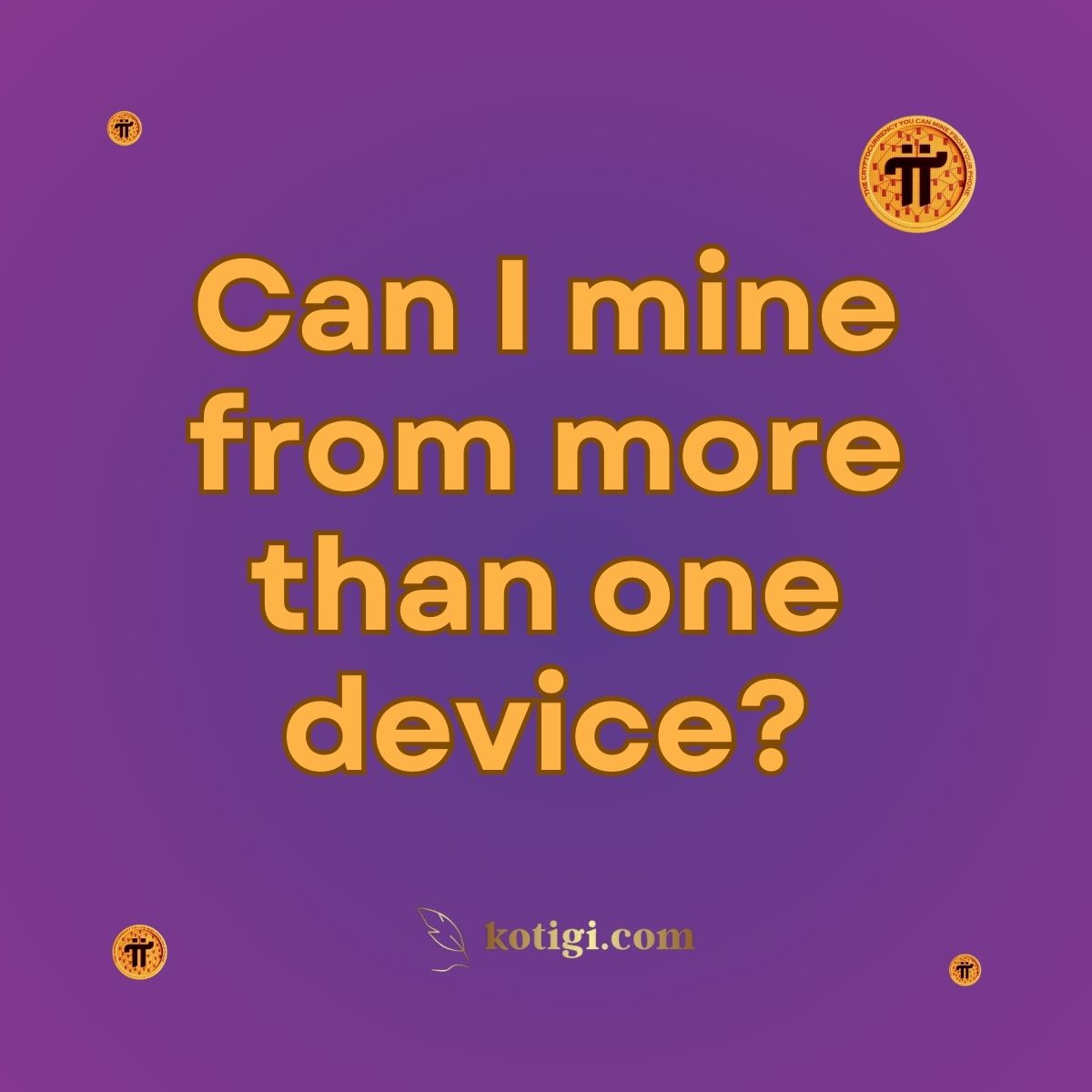
Can I mine from more than one device?
No, you cannot mine Pi from more than one device per account. Pi Network is designed to ensure fairness by allowing each user to mine Pi using only one mobile device linked to their verified account. Mining from multiple devices would violate the platform’s policies and could lead to penalties.
Introduction
With Pi Network gaining popularity as a mobile-first cryptocurrency, many users are curious about the rules and limitations around mining Pi. A common question is whether it’s possible to mine Pi from more than one device simultaneously. Given the importance of security and fairness in the network, Pi Network has established strict policies on how mining can occur. In this article, we will explore the limitations on mining from multiple devices, why these rules exist, and the consequences of trying to bypass them.
Why Pi Network Limits Mining to One Device Per Account?
Pi Network aims to create a decentralized, fair, and widely distributed cryptocurrency that anyone can mine on their mobile phone. However, to maintain this vision, the platform enforces specific rules, particularly regarding the devices users can mine from.
Preventing Exploitation and Fraud
Allowing users to mine Pi from multiple devices would give them an unfair advantage, enabling them to accumulate more Pi coins than those mining from a single device. This could lead to an imbalance within the network and undermine the decentralized nature of Pi. Furthermore, enabling multiple-device mining would open the door to fraud, as individuals might create fake accounts and mine from numerous devices simultaneously to increase their earnings.
Ensuring Network Security and Integrity
Limiting mining to one device per account is also a vital security measure. By restricting users to a single device, Pi Network can better monitor account activity and detect suspicious behavior, such as the use of bots or automated mining tools. Ensuring that only real, verified individuals mine Pi from their unique devices helps maintain the integrity of the network and ensures that the distribution of Pi remains fair.
How Pi Network Enforces the One-Device Rule?
To ensure that each user mines Pi from only one device, Pi Network has implemented several mechanisms that monitor and enforce this policy.
Device Verification
When users create a Pi Network account, their device is linked to the account. This linkage allows Pi to recognize the device that is authorized to mine on behalf of that specific user. While users can access their Pi account from other devices, such as a tablet or desktop for non-mining activities, mining Pi is restricted to the registered mobile device only.
IP Address and Device Monitoring
Pi Network monitors various aspects of user activity, including IP addresses and device identification. If the system detects multiple devices attempting to mine from the same account, or if the same device is used to mine from multiple accounts, the network may flag the account for suspicious activity. Such actions can lead to penalties, including the suspension of the account.
KYC Verification
Pi Network also uses the Know Your Customer (KYC) verification process to ensure that each account belongs to a unique individual. KYC helps prevent individuals from creating multiple accounts to mine Pi from several devices. By verifying the identity of each user, the network ensures that the same person does not operate multiple accounts with the intention of mining Pi on multiple devices.
What Happens if You Try to Mine Pi from More Than One Device?
Pi Network takes violations of its one-device-per-account rule seriously. If the system detects any attempt to bypass this restriction, there are several consequences that users could face.
Account Suspension or Ban
If Pi Network detects that you are trying to mine from more than one device or operating multiple accounts to increase your Pi earnings, your account could be suspended or permanently banned. The platform has strict policies against cheating and will act to protect the fairness of the network.
Loss of Earned Pi
In addition to account suspension, users caught violating Pi Network’s policies may lose any Pi they have earned from mining. This is because the network values integrity and fairness, and rewards users who follow the rules. Any attempt to mine from multiple devices is considered cheating, and Pi Network reserves the right to forfeit Pi earnings gained through dishonest means.
Why Pi Network’s One-Device Policy Is Crucial for Its Future?
While some users may find the one-device restriction limiting, it is crucial for Pi Network’s overall mission of creating a decentralized and secure cryptocurrency. By enforcing this policy, Pi Network ensures that the currency remains distributed fairly among its user base.
Supporting Decentralization
The primary goal of Pi Network is to create a decentralized cryptocurrency that is accessible to everyone. Allowing users to mine Pi from multiple devices would disproportionately benefit those with more resources, contradicting the network’s vision of equal opportunity for all. By limiting mining to one device per user, Pi Network promotes the decentralization and fairness that cryptocurrencies aim to achieve.
Maintaining Long-Term Value
Another reason for restricting mining to one device per account is to protect the long-term value of Pi. If users were allowed to mine from multiple devices, it could lead to an oversupply of Pi coins, which would devalue the currency over time. By controlling the rate at which Pi is mined, the network ensures that the coin retains its value as the user base grows.
Can You Switch Devices for Mining?
Though Pi Network restricts mining to one device, users may sometimes need to change their device, whether due to an upgrade, a lost phone, or other reasons. In such cases, Pi Network does provide the option to transfer your mining account to a new device, but this process must be done carefully to avoid being flagged for suspicious activity.
Steps to Safely Switch Devices
- Log Out from Your Old Device: Before logging into a new device, make sure to log out of the Pi Network app on your old device.
- Log In with the Same Account on the New Device: Use your original account credentials to log in on your new device. This ensures that your mining history and any earned Pi are correctly transferred.
- Verify Your Identity Again: In some cases, Pi Network may ask you to verify your identity to confirm that you are the rightful owner of the account.
- Start Mining on the New Device: Once the account has been successfully transferred, you can continue mining on your new device. Remember, only one device can be used for mining at a time.
Important Considerations
While switching devices is allowed, it is essential to follow the correct procedure to avoid potential issues with your account. Frequent switching between devices could trigger security alerts, and Pi Network may temporarily restrict your account until they can verify the activity.
Conclusion
In summary, Pi Network’s one-device-per-account rule is a crucial aspect of maintaining fairness, security, and decentralization within the network. While it may seem restrictive to some users, this policy ensures that Pi mining remains accessible to everyone and prevents fraudulent activities that could undermine the platform’s success. If you attempt to mine from more than one device, you risk losing your account and any Pi you have earned. However, Pi Network allows users to switch devices under certain conditions, ensuring flexibility for legitimate users.
The future of Pi depends on the integrity of its user base, and by adhering to the one-device rule, users contribute to the network’s long-term success.
Key Takeaways:
- Pi Network restricts mining to one device per user to ensure fairness and prevent fraud.
- Mining Pi from multiple devices or operating multiple accounts can lead to account suspension or a ban.
- Users can switch devices, but must follow specific steps to avoid losing their mining progress.
- The one-device rule supports Pi Network’s goal of decentralization and long-term value retention.





